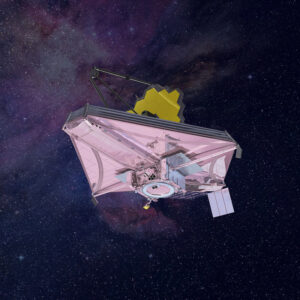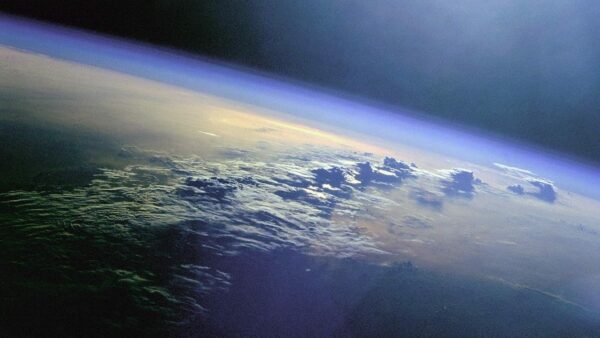The James Webb Space Telescope (JWST) is humanity’s most powerful eye on the universe — NASA’s long-awaited successor to the legendary Hubble Space Telescope.
Since its flawless launch on December 25, 2021, JWST has been reshaping our understanding of the cosmos. It’s revealing new-born stars, distant galaxies formed just after the Big Bang, and the atmospheric fingerprints of planets beyond our solar system.
This article explores what makes JWST such a marvel — its infrared vision, ground-breaking engineering, and the astonishing discoveries it’s already made.
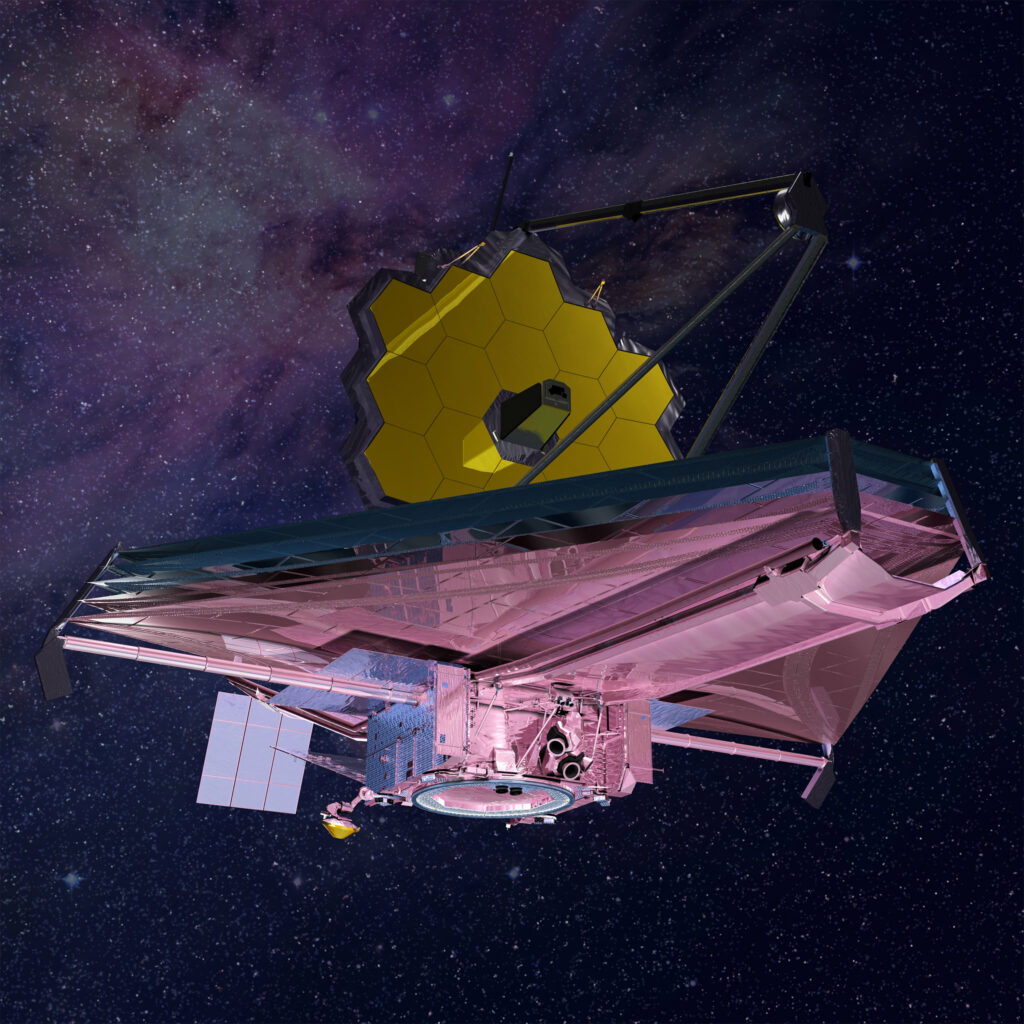
Image Credit: NASA/Northrop Grumman
The James Webb Space Telescope : Artists Impression
- Why the James Webb Space Telescope Matters
- What Are The JWST Capabilities?
- Engineering Marvel: How JWST Works
- Orbiting At The Edge Of Earths Influence
- The Legacy and Future of JWST
- Frequently Asked Questions
Why the James Webb Space Telescope Matters
For more than 30 years, the Hubble Space Telescope has transformed how we see the universe. But Hubble sees mostly in visible and ultraviolet light, limiting its view of the earliest, most distant objects.
JWST takes the next leap forward. Designed to observe primarily in infrared light, it can peer through cosmic dust and detect faint heat signatures from galaxies born over 13 billion years ago — light that has travelled across nearly all of cosmic history to reach us.
What Are The JWST Capabilities?
Seeing Further Back In Time
As the universe expands, light from ancient galaxies is stretched into longer wavelengths, moving from visible light into the infrared spectrum.
JWST’s instruments are tuned precisely for this range, allowing astronomers to look back to when the first stars and galaxies were taking shape.
Already, JWST has shattered expectations by capturing the most distant galaxies ever observed, some formed just 300 million years after the Big Bang — a period once thought impossible to study in detail.
Every new JWST image is a glimpse into the universe’s earliest chapters — the time when light itself was young.
Revealing the Hidden Birthplaces of Stars
Infrared vision doesn’t just look deeper in time — it looks deeper into dust and gas, where new stars are born.
While visible light is blocked by these dense clouds, infrared light passes through, revealing stellar nurseries previously hidden from view.
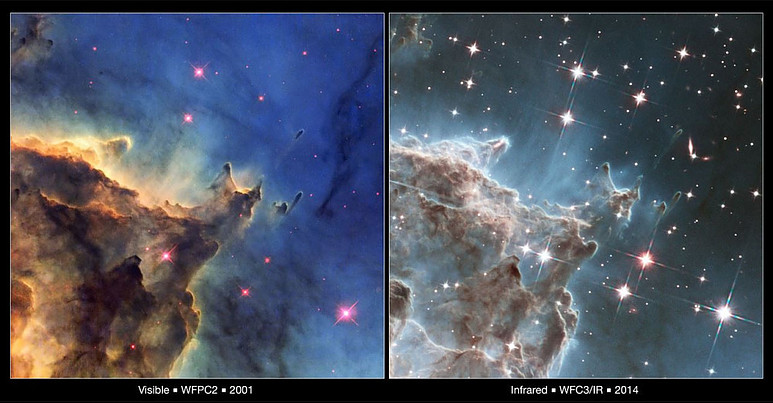
Credit: NASA, ESA and the Hubble Heritage Team (STScI/AURA), and J. Hester
These images compare two views of the star-forming nebula NGC 2174 in the constellation of Orion. Stars and distant galaxies, which are hidden by dust and gas in the visible light image on the left, are revealed in much more detail in the infra-red image on the right.
Discovering Exoplanets and Signs of Life
For decades, astronomers have known of thousands of exoplanets — planets orbiting stars beyond our Sun. But only now, with JWST, can we begin to study their atmospheres in detail.
Using a technique called transmission spectroscopy, JWST analyzes starlight that filters through a planet’s atmosphere as it passes in front of its star. This light carries chemical fingerprints — molecules like water vapor, carbon dioxide, and methane — that hint at the planet’s composition and potential habitability.
In 2023, JWST made headlines by detecting carbon dioxide in the atmosphere of exoplanet WASP-39b, and later observed water vapor and possible methane on smaller, rocky worlds. These are the first steps toward answering one of humanity’s greatest questions: Are we alone?
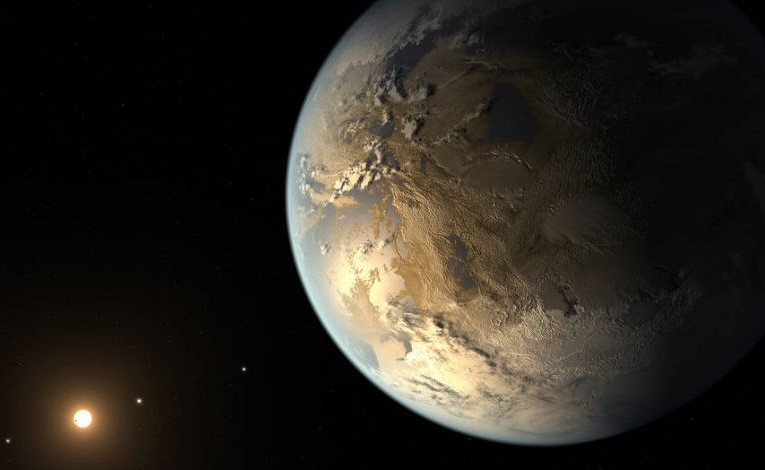
Image credit: NASA/Ames/SETI Institute/JPL-Caltech
An artist’s impression of the planet Kepler-186f, the first validated Earth-size planet to orbit a distant star in the ‘habitable zone’ — a range of distance from a star where liquid water might pool on the planet’s surface.
Exploring Our Own Solar System
JWST isn’t just gazing into deep space — it’s also turning its powerful eyes to our solar system.
It has already provided breath-taking infrared views of Jupiter, Saturn’s rings, and the icy moons of Neptune and Uranus.
These observations help scientists study weather patterns, seasonal changes, and trace organic molecules that could reveal more about how our solar system formed and evolved. Even Mars has come under Webb’s gaze, allowing detection of faint gases and heat variations across its surface.
Engineering Marvel: How JWST Works
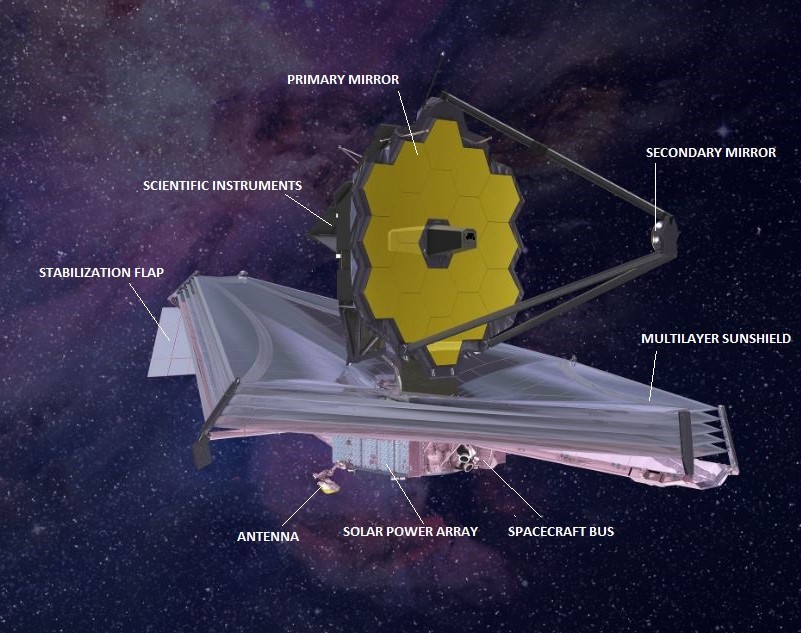
Image Credit: NASA/Northrop Grumman
PRIMARY MIRROR
JWST’s 6.5-metre gold-coated mirror, composed of 18 hexagonal beryllium segments, collects more than six times the light of Hubble’s mirror. Each segment is adjustable with microscopic precision, aligning perfectly in space to act as one enormous mirror.

SECONDARY MIRROR
Although described as the “secondary” mirror, it is one of the most important pieces of equipment on the telescope. Without the proper positioning of the secondary mirror none of the images and revolutionary science would be achievable.
The secondary mirror faces the much larger gold coated primary mirror, where light from distant objects are reflected into a focused beam.
The focused beam is then directed back through the centre ‘hole’ in the primary mirror to Webb’s powerful scientific instruments.
THE SUNSHIELD
Infrared astronomy requires extreme cold. To protect its instruments from the Sun, Earth, and Moon, JWST deploys a five-layer sunshield the size of a tennis court.
Made of aluminium-coated Kapton, it keeps the telescope chilled to –223°C (–370°F) — cold enough to detect the faintest heat signals from the distant universe.
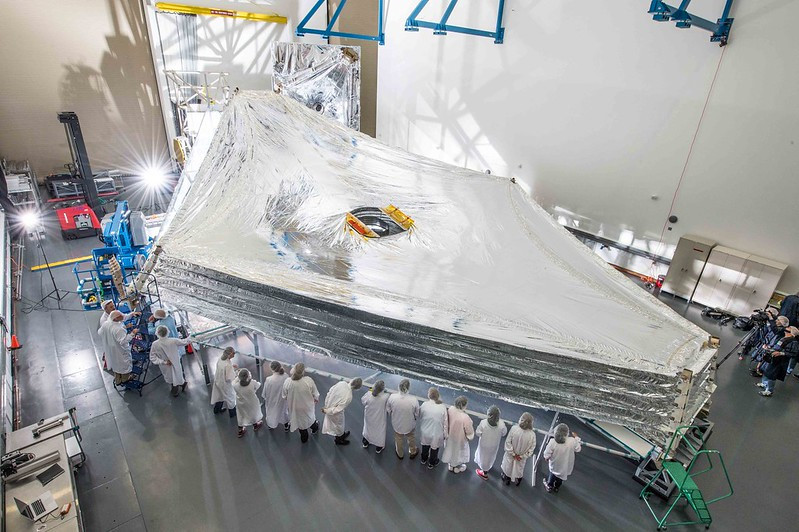
Image Credit: NASA/Northrop Grumman
Sunshield Full-Size Test Unit
THE SPACECRAFT BUS
The curiously-named ‘spacecraft bus’ houses the telescope’s computers, communications systems, and a 20-foot solar array that powers its operations. Every movement and data transmission is coordinated through this system — the unseen backbone of Webb’s success.
THE SCIENCE INSTRUMENTS
JWST carries four main scientific instruments:
- NIRCam (Near Infrared Camera) – captures stunning images and measures light from the earliest galaxies.
- NIRSpec (Near Infrared Spectrograph) – can study up to 100 galaxies at once, analyzing their chemical compositions.
- MIRI (Mid-Infrared Instrument) – peers even deeper into space and reveals details about forming stars, comets, and distant exoplanets.
- FGS/NIRISS (Fine Guidance Sensor / Near Infrared Imager and Slitless Spectrograph) – keeps the telescope perfectly steady and provides additional imaging capabilities.
Together, these instruments turn JWST into the most capable space observatory ever built.
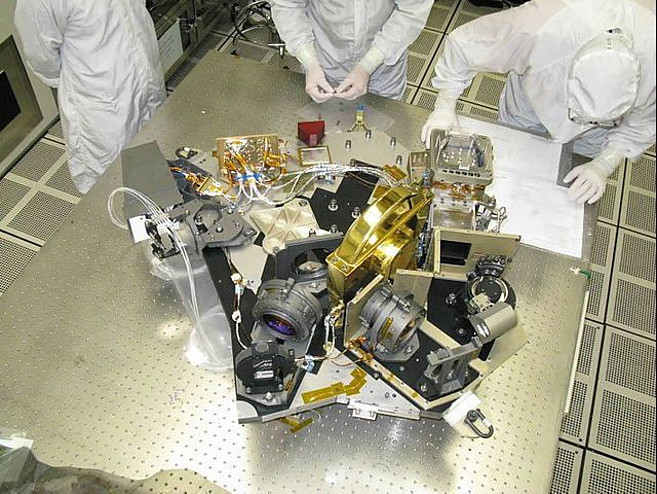
The Near Infrared Camera (NIRCam)
Orbiting at the Edge of Earth’s Influence

The James Webb Space Telescope’s distance from Earth compared to Hubble
While Hubble orbits just 570 km above Earth, JWST operates 1.5 million kilometres (nearly 1 million miles) away, at a stable region of space known as the Lagrange Point 2 (L2).
At this location, Earth, the Moon, and the Sun all remain on one side of the telescope, allowing its sunshield to continuously protect it from heat and light. The result: a stable, icy-cold vantage point perfect for deep-space observation.
The Legacy and Future of JWST
In just a few short years, the James Webb Space Telescope has already exceeded expectations.
It’s revealing galaxies that challenge existing cosmological models, uncovering star-forming regions never seen before, and beginning to decode the atmospheres of alien worlds.
As the telescope continues its mission into the late 2020s and beyond, it will help answer profound questions about the origins of stars, the nature of dark matter, and the possibility of life elsewhere in the universe.
Frequently Asked Questions
How is JWST different from Hubble?
JWST observes mainly in infrared light, allowing it to see through dust and study older, colder objects — things invisible to Hubble’s optical and ultraviolet instruments.
How far can JWST see?
It can detect galaxies over 13 billion light-years away, formed just a few hundred million years after the Big Bang.
How cold is JWST?
Its instruments operate at around –223°C (–370°F), kept that way by its sunshield and distant orbit at L2.
Will JWST last forever?
It carries enough fuel for at least 10 years of operations. With careful management, scientists hope to extend its mission well beyond that.
A New Era of Cosmic Discovery
The James Webb Space Telescope represents humanity’s greatest astronomical achievement — a time machine peering into the universe’s distant past while searching for worlds that could one day answer the ultimate question: Are we alone?
Each image it sends home reminds us how far curiosity and collaboration can take us — across space, across time, and into the heart of creation itself.
